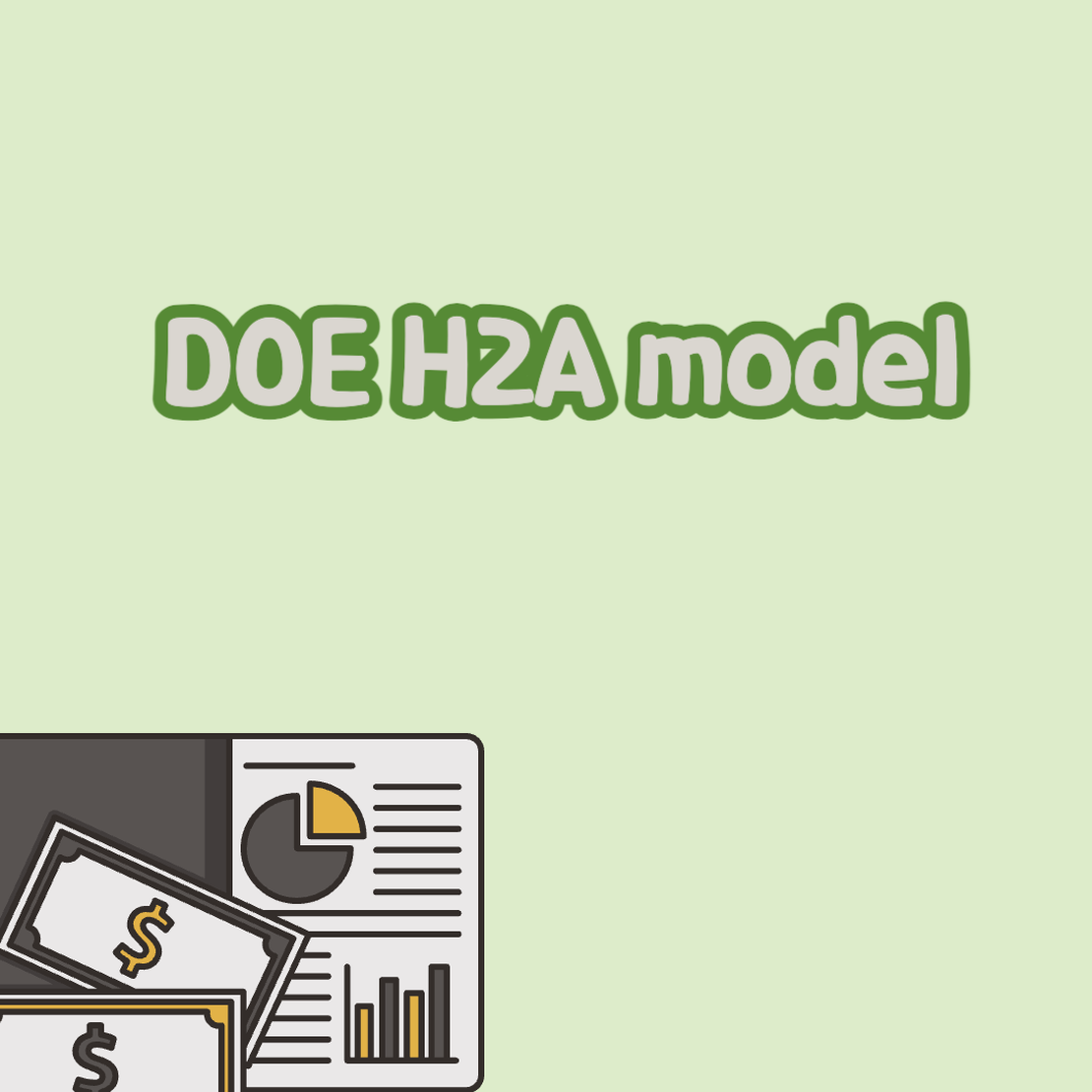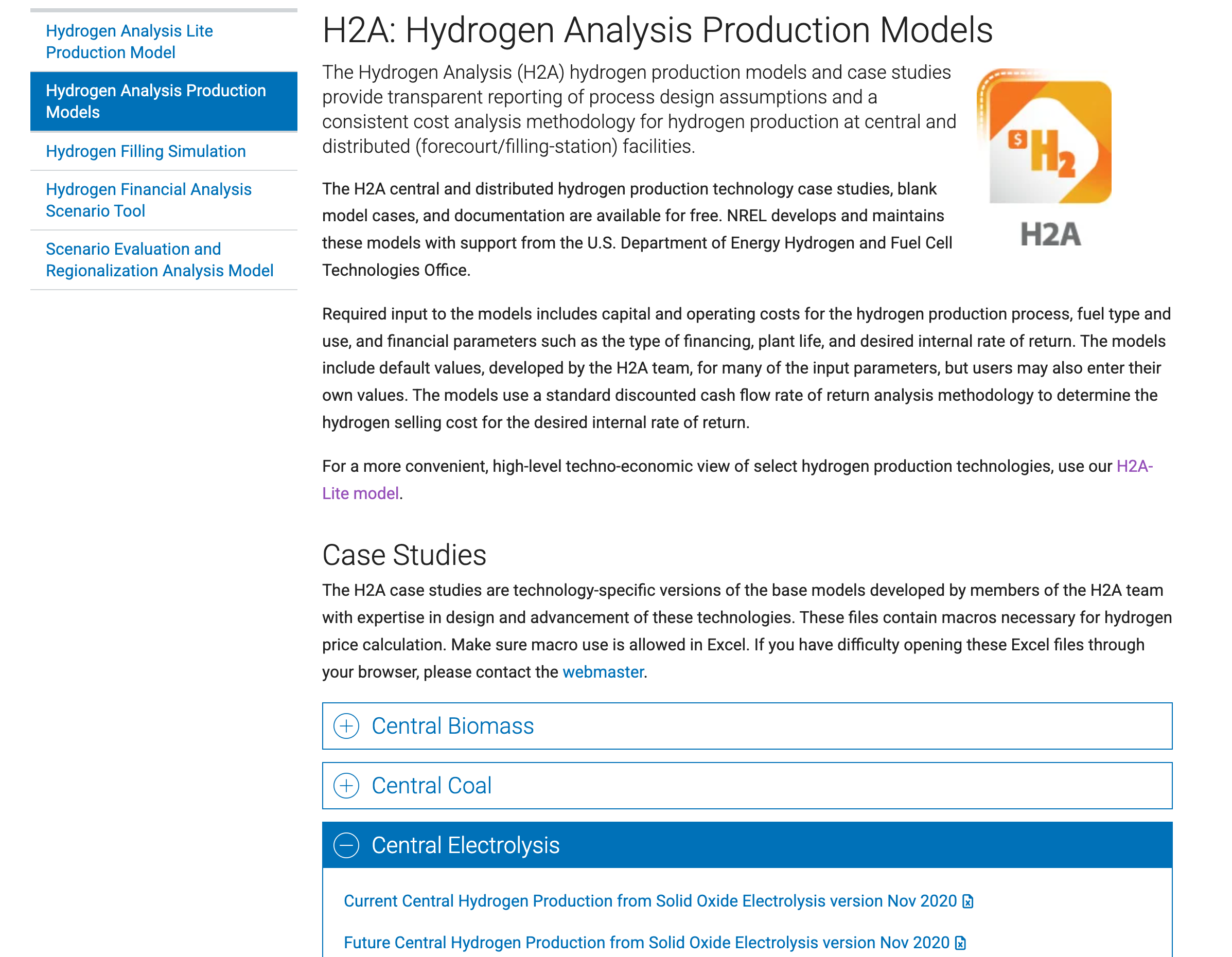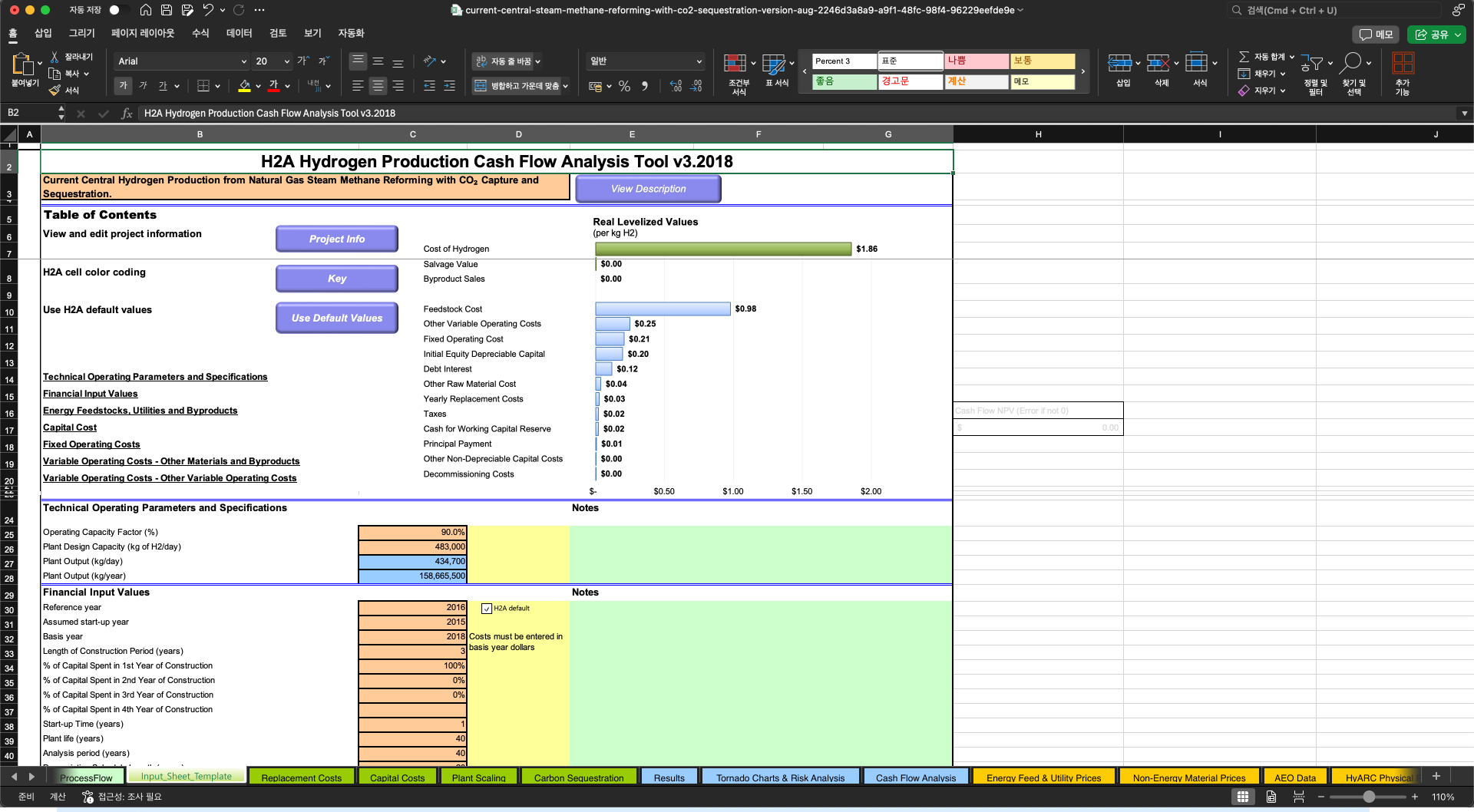
H2A Model Download and Utilization Guide: Essential Tool for Hydrogen Production Economic Evaluation
- Boreum Lee, Ph.D.
- H2A Model
- May 31, 2025
What is the H2A Model?
The H2A (Hydrogen Analysis) model is a hydrogen production economic evaluation tool developed by the National Renewable Energy Laboratory (NREL) in the United States. This model provides transparent reporting of process design assumptions and consistent cost analysis methodology for hydrogen production at central and distributed (forecourt/filling-station) facilities.
The greatest advantage of the H2A model is that it uses a standard discounted cash flow rate of return analysis methodology to determine the hydrogen selling cost for the desired internal rate of return. This is a key feature that enables objective comparison and evaluation of the economics of various hydrogen production technologies.

Types and Features of H2A Models
Currently available H2A models are broadly divided into two types:
1. H2A Production Models
The traditional H2A model, which is a comprehensive tool for detailed techno-economic analysis. This includes the following case studies:
- Electrolysis Technologies: Solid Oxide Electrolysis (SOEC), Polymer Electrolyte Membrane Electrolysis (PEM)
- Reforming Technologies: Steam Methane Reforming (SMR), Autothermal Reforming (ATR)
- CO₂ Capture Options: With/without Carbon Capture and Storage (CCS)
2. H2A-Lite Model
H2A-Lite provides high-level techno-economic analysis of select hydrogen production technologies with minimal inputs. Compared to the complex H2A model, it is easier to use and suitable for initial reviews or quick comparative analysis.
How to Download H2A Models
Step 1: Access NREL Website
To download H2A models, visit the following website: https://www.nrel.gov/hydrogen/h2a-production-models
Step 2: Select Required Model Type
On the website, you can find the following options:
Case Studies
Models with pre-set parameters for specific technologies:
- Solid Oxide Electrolysis (Current/Future versions)
- PEM Electrolysis (Current/Future versions)
- Natural Gas Steam Methane Reforming (with/without CCS)
- Natural Gas Autothermal Reforming (with CCS)
Blank Model Cases
Templates where users can input their own parameters:
- H2A Central Hydrogen Production Model version 3.2018
- H2A Current Distributed Hydrogen Production Model version 3.2018
Step 3: Download and Execute Files
File Format: All H2A models are provided as Excel files (.xlsm).
Macro Settings: When opening downloaded files, you must allow macro usage in Excel. This is necessary for hydrogen price calculation functions.
Browser Issue Resolution: If you have difficulty opening Excel files through your browser, save the file to your local computer and open it directly in Excel.
Step 4: Download H2A-Lite Model (Optional)
For simpler analysis:
- Visit https://www2.nrel.gov/hydrogen/h2a-lite
- Download link provided after user registration
- Download as Microsoft Excel file (functionality not guaranteed on Mac)
Essential Input Information for Model Utilization

To effectively utilize H2A models, the following input information is required:
Technical Parameters
- Capital and operating costs of hydrogen production processes
- Fuel type and consumption
- Process efficiency and performance indicators
Financial Parameters
- Financing type (debt/equity ratio)
- Plant operating lifetime
- Target internal rate of return
- Discount rate and tax rate
Utilizing Default Values
Default values developed by the H2A team are provided for many parameters, so you can use these for initial analysis and modify them with your own values as needed.
Latest Version Information (Version 3.2018)
The current latest version 3.2018 includes the following updates:
- Reference Year Updates: Current technology to 2015, future technologies to 2040
- Energy Cost Reflection: Fuel cost updates based on AEO 2017 case
- Reference Currency: 2016 dollar basis
- Emission Factors: Updated with GREET 2015 values
- Tax Rate: Federal tax rate adjusted to 21%
- Cost of Capital: 40% equity financing, 3.7% interest rate, 8% real after-tax internal rate of return
Technical Support and Inquiries
If you have questions while using H2A models, you can contact the NREL hydrogen analysis team directly. You can receive support on model usage or technical issues to help with your research progress.
Conclusion
The H2A model is one of the most widely used standard tools in the field of hydrogen economic evaluation. Through this powerful analysis tool provided free of charge, you can objectively evaluate the economics of various hydrogen production technologies and increase the reliability of research results.
For first-time users, it is recommended to understand the structure and functions of the model through the provided case studies, then input parameters suited to your research objectives. In particular, the H2A-Lite model is very useful for quick initial reviews, so using both models in parallel will enable more effective analysis.